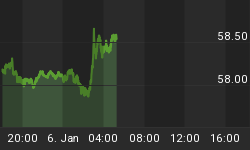This year will continue to be a sellers’ market in the real-estate sector, with home value expected to increase anywhere from 3% to double digits.
Market moves have even prompted online real estate giant Zillow to issue a correction to its December home price predictions for 2022. In December, Zillow had predicted that prices would climb 11% by the end of 2022. But now, Zillow is forecasting that home prices will increase by 16.4%.
“Home values are expected to grow 4.1% in Q1 2022, and to end 2022 up 16.4% from the end of 2021, with the pace of annual growth expected to peak at 20% in February before gradually slowing throughout the remainder of the year,” the report said.
But there isn’t exactly a consensus here. Other real estate companies disagree with Zillow's forecast. Redfin and Realtor predict that during 2022 the home prices will rise by 3% and 2.9%, respectively.
Zillow did include some downside risks to the forecast, noting that “elevated inflation heightens the risk of near-term monetary policy tightening, which would result in higher mortgage rates and weigh on housing demand”.
In Spring 2020, forecast models by CoreLogic, backed by Zillow, predicted that home prices would fall due to the pandemic.
Since then, U.S. median home list prices are up 27%, as massive home buyer demand saw inventory plunge to a 40-year low with multiple biddings reaching all-time high.
A couple of factors helped push up house prices.
The pandemic increased demand for housing in tandem with increased work-from-home trends. In addition, historically low mortgage interest rates made home-buying extra attractive.
Normally, new construction would increase the supply of housing and would keep prices in check. However, due to the lockdowns during the peak of the pandemic and a subsequent building material supply crunch, new-built homes couldn’t keep pace with demand
With respect to the U.S. housing market, which now encompasses 15% of the nation’s economy, buyers can expect similar trends such as those we have seen over the past two years: elevated prices, low inventory and all-time fast turnaround. That will leave young buyers at a continued disadvantage.
With home prices having risen dramatically since 2020, many millennials, who are at peak first-time home-buying age, have boycotted the market–and that trend will likely continue in 2022.
In turn, we’ve seen a boost in the number of young adults living with their parents, even post-college.
Currently, more than half of American young adults live with their parents. That’s a level last seen during the Great Depression. In 2007, before the recession, only 28% lived in their parents’ home.
But the pandemic and the housing market aren’t the only causes of this phenomenon. In addition to wage stagnation and recession, young adults are also struggling under the massive weight of student loan debt.
According to a recent Bank of America survey, only 16% of millennials now have savings of $100,000 or more. In addition to that, a National Institute on Retirement Security study says that 66% of Americans between the ages of 21 and 32 have nothing saved for retirement.

















